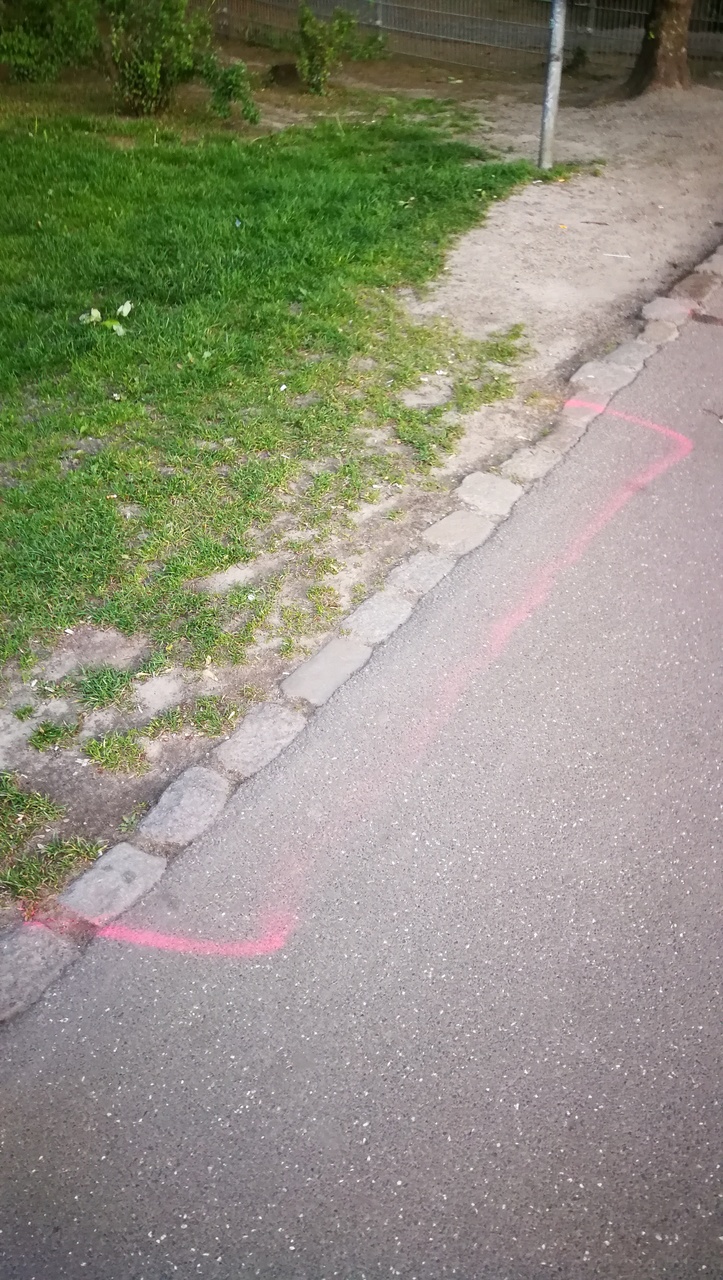The politics of pink spray on a pathway
In 2019 a number unremarkable pink lines sprayed on the asphalt of Berlin’s Görlitzer Park caused some trouble in Berlin and a remarkable global media coverage. Somewhat sloppy drawn, these open boxes appeared alongside some of the park’s throughways, especially around some of it’s entrances. To the average user of the park as well as to the wider public those marks would probably be neither have become significant nor meaningful if the local park manager had not somewhat careless explained them to a local newspaper. But for a short time this pink spray paint became the visible marker of the governing of urban drug cultures in Berlin and for conservative observers visualized Berlin’s failure to fight drug related crimes.
Since around 2013 this small park in Berlins district Kreuzberg had become the center of debates around migration, drugs, tourism and gentrification in Germany, with reports in local, national and international media. Within the public discourse this 14ha park became the most famous site for the distribution and consumption of drugs in Germany – primarily cannabis but the media was also full of stories of children finding used syringes and packages of cocaine. The Swiss “Neue Züricher Zeitung saw this park as a symbol of Berlin’s failed migration policy.
Under the pressure of the public discourse - especially from outside of Kreuzberg and influenced by conflicts between the local and the regional scale of the state - in 2015 the Park became a zero tolerance zone for possessing drugs that allowed stop-and-frisk-like measures by the police. In addition, the park-management tried to design out crime by cutting down the bushes and srubs, improve lighting.
The war on Görli: could cleaning up Berlin destroy the reason people love it?
Unsurprisingly the zero tolerance policies and the gardening did not succeed in eliminating drug trade and after a new center-left coalition took power in Berlin in 2016 the repressive strategy was discontinued. While drug-laws cannot be changed on the local or regional level, what was introduced instead was a new mode soft policing and a governing through mediation that tried to acknowledge both concerns of all involved actors (be it tourists, drug dealers and buyers, young parents and children, local bar owners or crowds of barbecuer’s)
This mediation involved the employment of a new park manager by the district government who was in charge of negotiation these different interests. It could be seen as a pragmatic attempt to make the different people who use this green space for a wide range of activities get along. This involved some forms of informal agreements on how to do the drug selling, for example the agreement to not sell to minors (there have been reports of drug dealer asking their customers for their ID) or to refrain from “aggressive marketing” and blocking the footpaths. At some point and in a dispute with one group amongst the people selling drugs, this governing and mediating of a contested urban space also involved a can of pink spray paint. But by visualizing an informal agreement in bright pink on the asphalt, it became a material fact that could not be tolerated.
This method has purely practical reasoning behind it,” Demirci told local radio station RBB. “It’s not that we’re legalising the selling of drugs.
